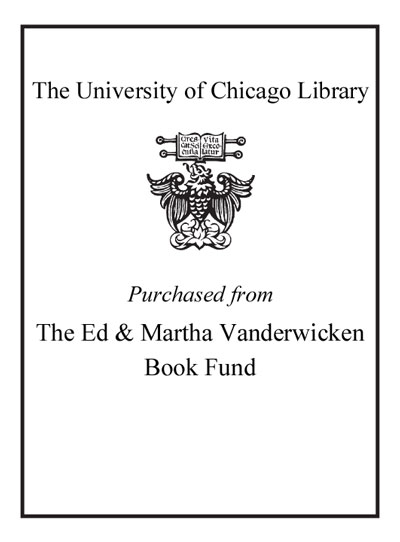Yiddish in Israel : a history /
Saved in:
| Author / Creator: | Rojanski, Rachel, author. |
|---|---|
| Imprint: | Bloomington, Indiana : Indiana University Press, [2020] ©2020 |
| Description: | xiii, 319 pages : illustrations ; 24 cm |
| Language: | English |
| Subject: | |
| Format: | Print Book |
| URL for this record: | http://pi.lib.uchicago.edu/1001/cat/bib/12033420 |
MARC
| LEADER | 00000cam a2200000Ii 4500 | ||
|---|---|---|---|
| 001 | 12033420 | ||
| 005 | 20200201151805.4 | ||
| 008 | 190405t20202020inua b 001 0 eng d | ||
| 003 | ICU | ||
| 040 | |a YDX |b eng |c YDX |d CDX |d GZN | ||
| 020 | |a 0253045150 | ||
| 020 | |a 9780253045157 | ||
| 020 | |a 9780253045140 |q (hardback) | ||
| 020 | |a 0253045142 |q (hardback) | ||
| 035 | |a (OCoLC)1081436793 | ||
| 050 | 4 | |a PJ5119.I75 |b R64 2020 | |
| 100 | 1 | |a Rojanski, Rachel, |e author. |0 http://id.loc.gov/authorities/names/no2004074860 |1 http://viaf.org/viaf/142428303 | |
| 245 | 1 | 0 | |a Yiddish in Israel : |b a history / |c Rachel Rojanski. |
| 264 | 1 | |a Bloomington, Indiana : |b Indiana University Press, |c [2020] | |
| 264 | 4 | |c ©2020 | |
| 300 | |a xiii, 319 pages : |b illustrations ; |c 24 cm | ||
| 336 | |a text |b txt |2 rdacontent |0 http://id.loc.gov/vocabulary/contentTypes/txt | ||
| 337 | |a unmediated |b n |2 rdamedia |0 http://id.loc.gov/vocabulary/mediaTypes/n | ||
| 338 | |a volume |b nc |2 rdacarrier |0 http://id.loc.gov/vocabulary/carriers/nc | ||
| 504 | |a Includes index and bibliographical references. | ||
| 505 | 0 | 0 | |g Acknowledgments. |g A note on transliteration, translation, and archival signatures. |g Introduction: "They are ashamed of us Yiddish writers." |t "Even the stones speak Hebrew": The melting pot and Israel's cultural policy -- |t The heart of Yiddish culture: the Yiddish press 1948-1968 -- |t "We are Jewish actors from the diaspora": Yiddish actors, Yiddish theater, and the Jewish State, 1948-1965 -- |t "To assemble the scattered spirit of Israel": high Yiddish culture - Di goldene keyt and the Yiddish chair at the Hebrew university -- |t "We are writing a new chapter in Yiddish literature": the literary group Yung Yisroel and the Zionist master narrative -- |t "You no longer need to be afraid to love Yiddish": 1965, the production of Di megile, and the return of Eastern Europe to Israel's collective memory -- |t The end of the twentieth century: private memory, collective image, and the retreat from the melting pot -- |g Epilogue. |g Bibliography. |g Index. |
| 520 | |a Yiddish in Israel challenges the commonly held view that Yiddish was suppressed or even banned by Israeli authorities for ideological reasons, offering instead a radical new interpretation of the interaction between Yiddish and Israeli Hebrew cultures. Author Rachel Rojanski tells the compelling and yet unknown story of how Yiddish, the most widely used Jewish language in the pre-Holocaust world, fared in Zionist Israel, the land of Hebrew. Following Yiddish in Israel from the proclamation of the State until today, Rojanski reveals that although Israeli leadership made promoting Hebrew a high priority, it did not have a definite policy on Yiddish. The language's varyfortunerute through the years was shaped by social and political developments and the cultural atmosphere in Israel. Public perception of the language and its culture, the rise of identity politics, and political and financinterestsrsts all played a part. Using a wide range of archival sources, newspapers , and Yiddish literature, Rojanski follows the Israeli Yiddish scene through the history of the Yiddish press, Yiddish theater, early Israeli Yiddish literature, and high Yiddish culture. With compassion, she explores the tensions during Israel's early years between Yiddish writers and activists and Israel's leaders, most of whom were themselves Eastern European Jews balancing their love of Yiddish with their desire to promote Hebrew. Finally, Rojanski follows Yiddish into the 21st century, telling the story of the reviinteresterst in Yiddish among Israeli-born children of Holocaust survivors as they return to the language of their parents. | ||
| 650 | 0 | |a Yiddish language |z Israel |x History. | |
| 903 | |a HeVa | ||
| 929 | |a cat | ||
| 999 | f | f | |i be49d19b-b73c-54ca-9efd-dacd0b934d9c |s e497bd1f-7468-5579-b4ad-8b91396e093b |
| 928 | |t Library of Congress classification |a PJ5119.I75 R64 2020 |l JRL |c JRL-Gen |i 11580174 | ||
| 927 | |t Library of Congress classification |a PJ5119.I75 R64 2020 |l JRL |c JRL-Gen |e VAND |b 116714430 |i 10222294 | ||

